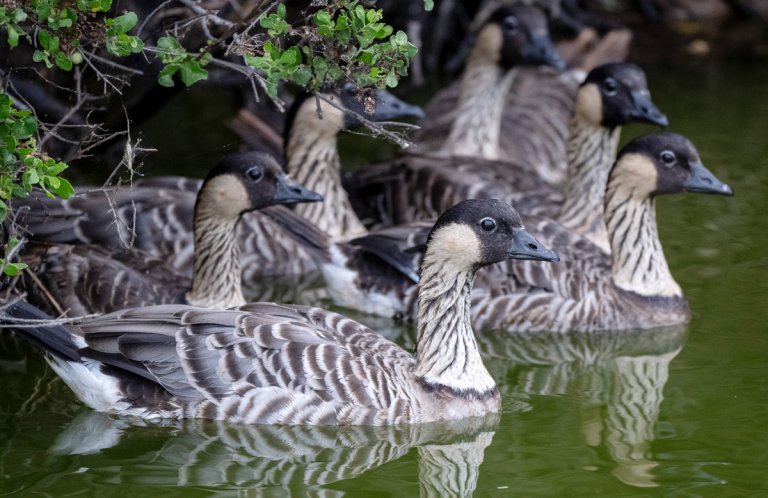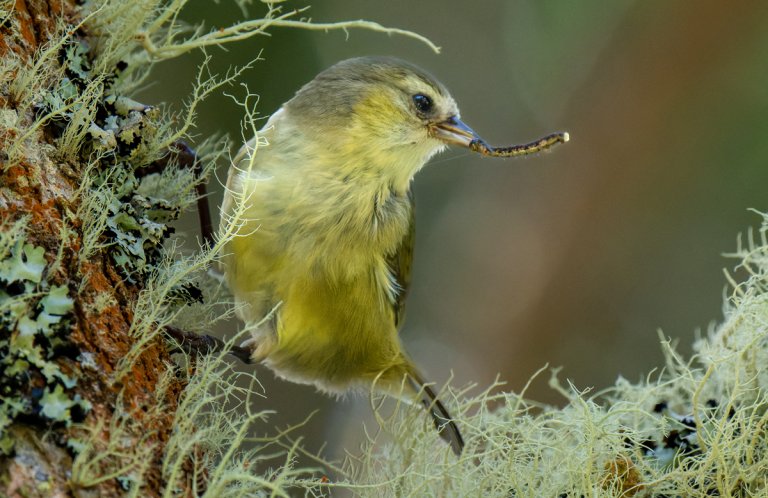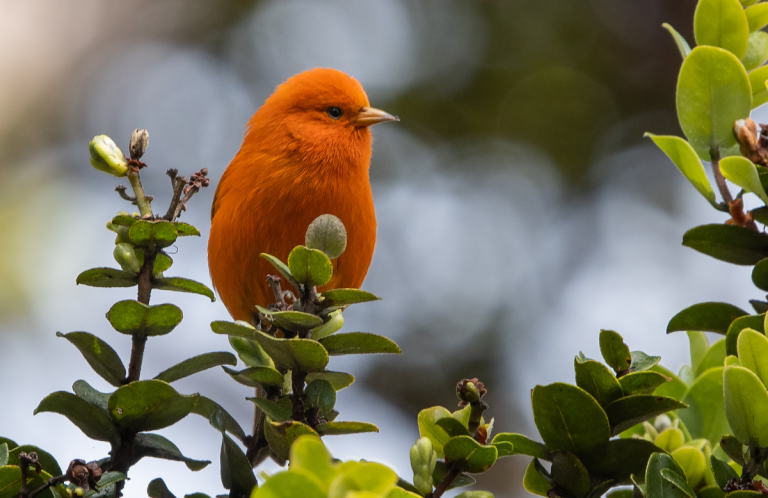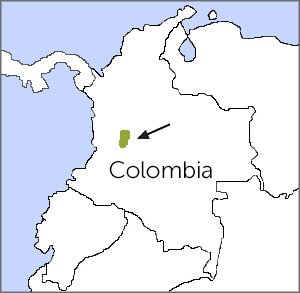
Fuertes's Parrot range map by ABC
The beautifully colored Indigo-winged Parrot, also known as the Fuertes's Parrot, was initially described in 1911 but then disappeared from historic records for over 90 years. Finally, in 2002, biologists from Fundación ProAves, funded by an ABC grant, discovered about a dozen individuals in fragmented, unprotected high-Andean cloud forest in Colombia.
This exciting rediscovery led to the purchase of property in 2007 to create the Fuertes's Parrot Reserve, which protects key nesting areas for the species. The formation of a Threatened Parrot Corridor followed in 2009. This series of reserves covers roughly 19,000 acres of key Colombian habitat and protects approximately 70 percent of the Indigo-winged Parrot's population. Four other species of endangered parrots also benefit from the corridor: the Yellow-eared Parrot, Rusty-faced Parrot, Golden-plumed Parakeet, and Rufous-fronted Parakeet.
An Artist's Inspiration
The Indigo-winged Parrot's species name, fuertesi, honors one of the greatest American bird artists, Louis Agassiz Fuertes. Educated at Cornell University and later becoming an ornithology professor there, Fuertes was a prolific and well-respected artist and ornithologist who worked during the late 19th and early 20th centuries.
Fuertes based his beautiful, lifelike bird illustrations on specimens and notes he acquired during field expeditions throughout the Americas, including Colombia, where he painted the parrot that later came to bear his name. Fuertes's passion for ornithology helped inspire the creation of the Cornell Lab of Ornithology in 1915.
The U.S. Fish and Wildlife Service (FWS) purchased many of Louis Agassiz Fuertes' works. The art is on loan to the Academy of Natural Sciences in Philadelphia until 2027, after which it will return to FWS's main collections.
Ranked Among the Rarest
A country endemic, the Indigo-winged Parrot is found only in a small range of 143 square miles in the central Andes of Colombia. It is one of South America's rarest birds, along with the Blue-eyed Ground-Dove and Antioquia Brushfinch.
The Indigo-winged Parrot gives a nasal, grating "krraa” call in flight and when perched.
(Audio: Ross Gallardy, XC348356. Accessible at www.xeno-canto.org/348356)
The Mistletoe Connection
The Indigo-winged Parrot has a specialized diet of mistletoe berries, but it will also feed on other fruits and seeds. It forages by flying among fruiting trees in small groups.
This parrot pairs off with a mate during its breeding season, rejoining a larger group after raising its young. Like other parrots and birds ranging from the Resplendent Quetzal to Tree Swallow, the Indigo-winged Parrot is a secondary cavity nester, making its home in a naturally occurring tree cavity or one excavated by another species, such as a woodpecker.
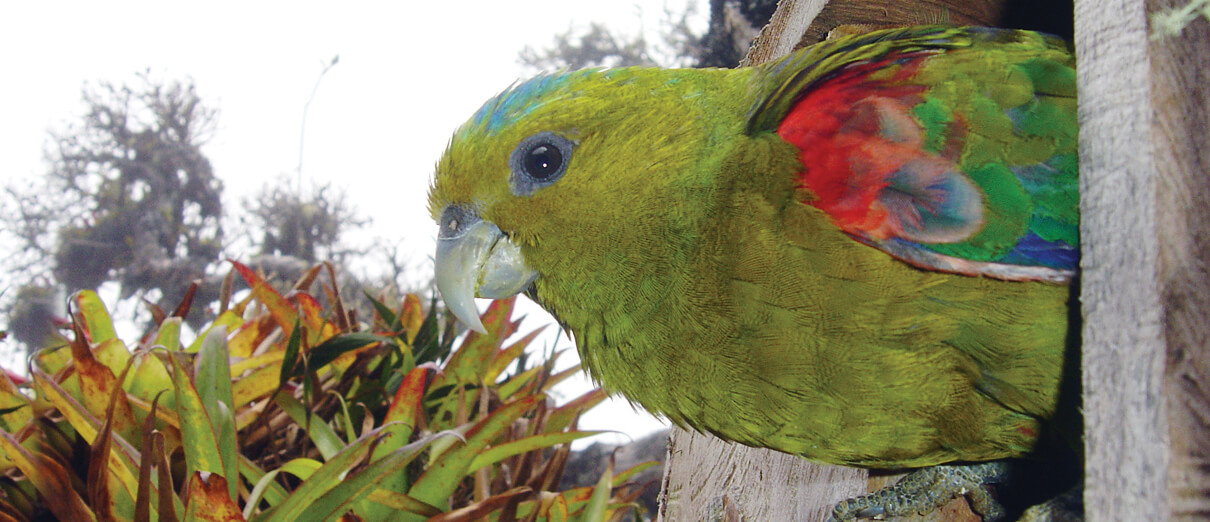
Indigo-winged Parrot in nest box. Photo by Fundación ProAves
The female Indigo-winged Parrot broods her clutch of three to four eggs alone, although the male pitches in to help feed and care for the chicks once they hatch.
Saving a Rarity
The main threat to the Indigo-winged Parrot is habitat loss, as forests containing key nesting sites are logged and cleared for farming, cattle ranching, and mining.
Fortunately, this species readily uses man-made nest boxes — a conservation strategy which has helped other rare relatives such as the Gray-breasted Parakeet and El Oro Parakeet. A nest box program started in 2004 for the Indigo-winged Parrot has achieved a nesting success rate of about 85 percent—an encouraging trend that is increasing its chances of survival.
A second reserve for the species, the Giles-Fuertesi Reserve, was established in 2010; it was doubled in size in 2012 when ABC and partners helped ProAves purchase additional habitat. The reserve now protects roughly one-fifth of the Indigo-winged Parrot's global population.
Donate to support ABC's conservation mission!







































